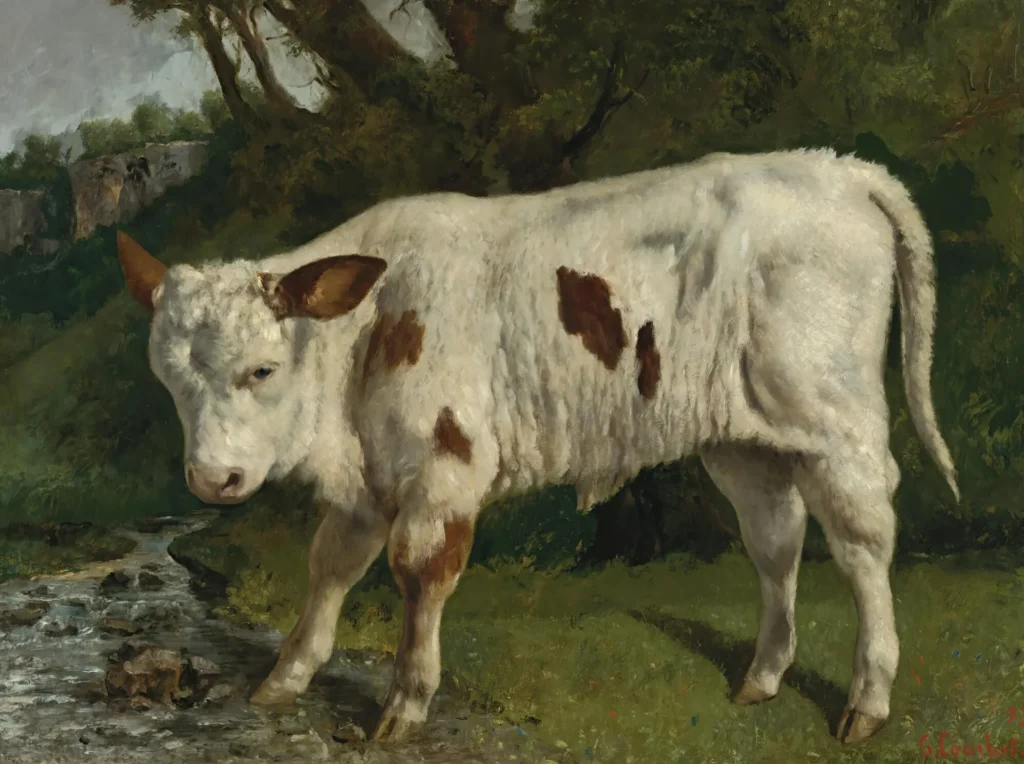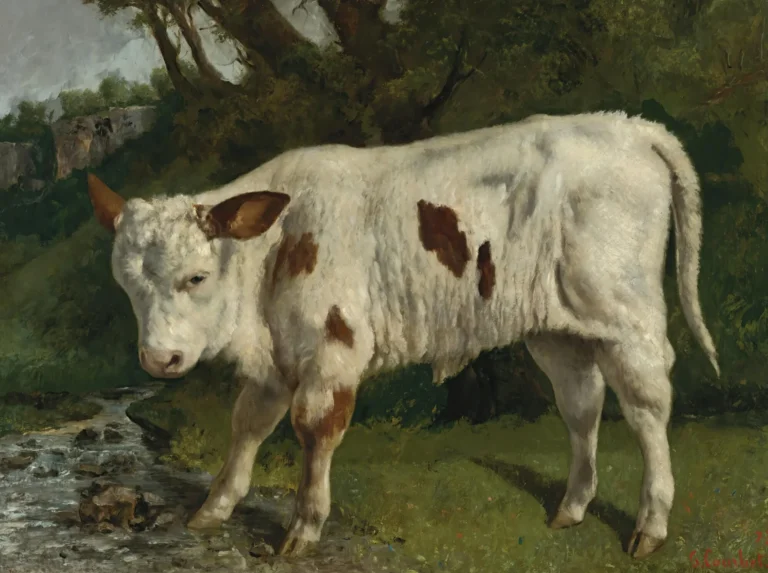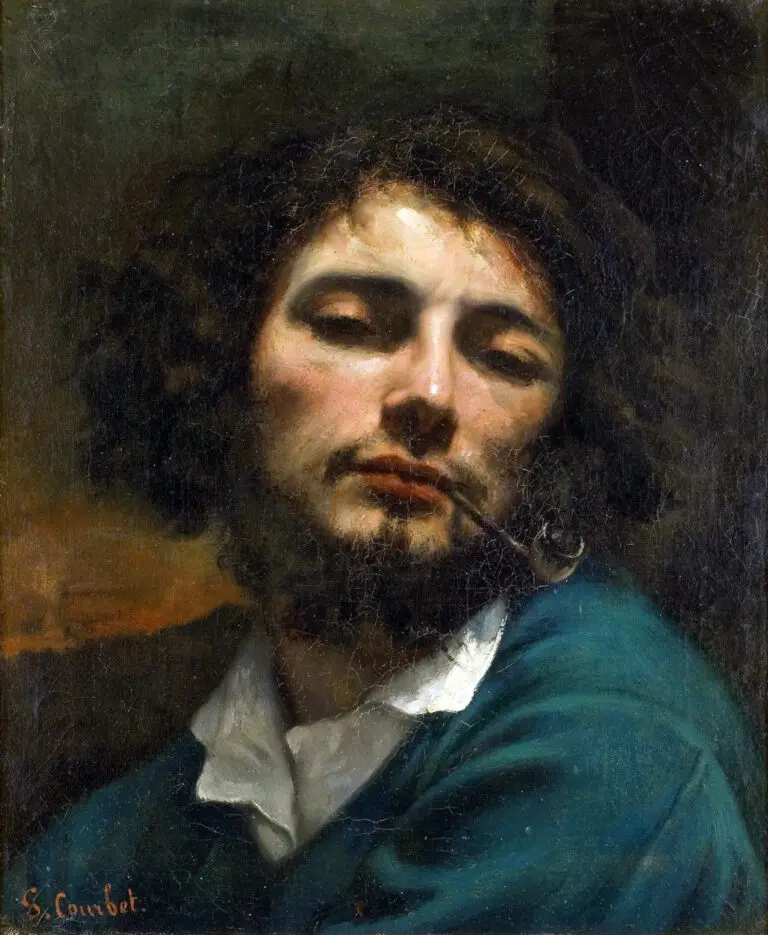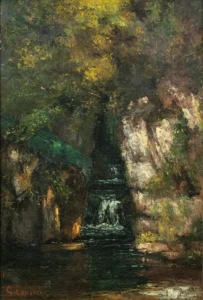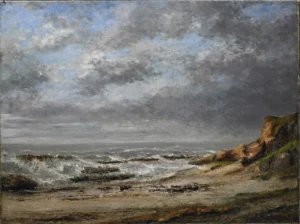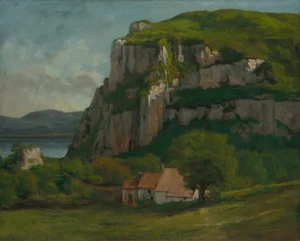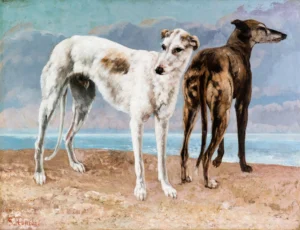Le Veau Blanc
Le Veau Blanc showcases a white calf, the focal point of the painting, brought to life with Courbet's characteristic attention to detail and vivid realism. Created during the latter part of Courbet's career, this painting exemplifies his commitment to portraying nature and everyday subjects. Measuring 88.9 x 116.2 cm and executed in oil on canvas, it highlights Courbet’s prowess in blending technical skill with a rich representation of life.
1872 - 1873
About the Artwork
The creation of Le Veau Blanc is rooted in Gustave Courbet's dedication to Realism, a movement that aimed to depict subjects in their natural state without idealization. Painted in the early 1870s, during a period of significant change in France, Courbet's work reflects a profound appreciation for simple rural life. The choice of a calf as the subject symbolizes purity and innocence, capturing a moment often overlooked in the art of the time. Notably, Courbet’s approach invites viewers to consider the beauty and importance of the everyday, challenging the grand historical and mythological themes prevalent in earlier art movements.
Did You Know
Liked what you see? Add it to your collection.
Enjoyed reading? Share it.
... continued
Artist and Period
Gustave Courbet, a prominent French Realist painter, painted Le Veau Blanc during his later career. Courbet was active from 1819 until his death in 1877.
Dimensions and Medium
The painting measures 88.9 x 116.2 cm (35 x 45 1/2 inches) and is executed in oil on canvas.
Location
The painting is part of the collection at the Musée Gustave Courbet in Ornans, France. It was donated by M. Jean Betoulle-Beaubatie.
Public Domain
Since Gustave Courbet died in 1877, Le Veau Blanc is now in the public domain in its country of origin and other countries where the copyright term has expired.
Subject Matter
The title Le Veau Blanc translates to 'The White Calf,' indicating that the painting features a white calf as its main subject. This work is characteristic of Courbet's Realist style, which often focused on everyday life and natural subjects.




